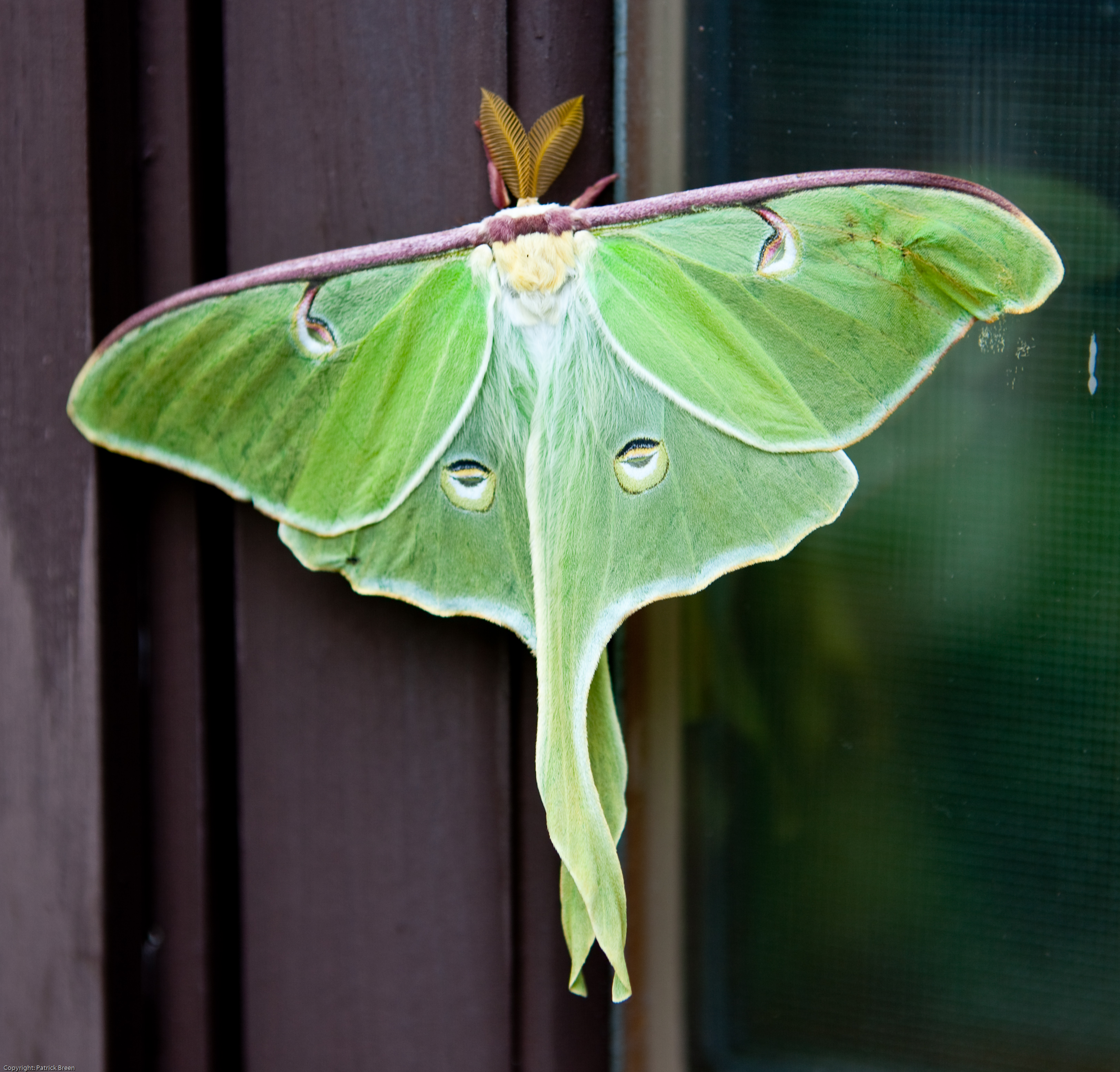Welcome to Creature Feature, a biweekly series from the CELT education team highlighting local wildlife. Each week, we will share a short introduction to a local organism that you might encounter in your backyard or on our trails.
The first time I saw a Luna moth when I was a kid I thought it was one of the most magical creatures I had ever seen! The beautiful, luminous green wings, the unique shape, and the excitement of discovering it one summer night all added the feeling of mystery.

Luna moths are a member of the silk moth family. They are very large, with an average wingspan of 4.5 inches and some recorded examples up to 7 inches! Luna Moths are found only in North America. They prefer deciduous forests and can be found from Saskatchewan to Texas, and from Nova Scotia to Florida.
Like all moths, Luna moths begin their life as an egg. The moment the caterpillar hatches out it begins eating and will eat constantly for about a month. The caterpillar feeds on the leaves of walnut, hickory, sweetgum, and paper birch trees. Once the caterpillar is full-grown it will go into its third stage of development, the pupa or cocoon.

Fun Fact: Moths make cocoons, while butterflies make chrysalises.
This stage will last about three weeks. When ready, the Luna moth will emerge from the cocoon, often in the morning, and be ready to fly by evening. In cooler climates like Maine, Luna moths born late in the season can spend the whole winter in the cocoon, usually hidden in the leaf litter at the base of a tree, and emerge as adults in the spring.
Adult Luna moths have no mouthparts! The adults only live for about a week and spend that whole time looking for a mate. If successful, the female will lay about 200 eggs in small batches on the underside of leaves.
Fun Fact: Moths have “fuzzy” antenna, while butterflies have thin, smooth antenna.
The Luna moth has to watch out for predators like owls, bats, bald-faced hornets, parasitic wasps, and certain ground beetles. The caterpillars have various clever ways of protecting themselves from predators. They can deter predators by rearing their front end in a “sphinx-like” stance, making a clicking noise with their mandibles (insect mouthparts), and regurgitating a distasteful fluid. Additionally, the luna caterpillars get protection from predators from their green coloration, which often camouflages them in their natural surroundings.

Luna moths got their name from the word “Luna,” meaning moon, due to their nocturnal nature and the moon-like spots on their wings. It is a very special treat to spot one of these beautiful creatures! Currently, Luna moths are not considered an endangered or even a threatened species, but many people (myself included) have noticed a decrease in the number of Luna moth sightings. Habitat loss and use of pesticides have had a negative effect on the Luna moths population, as well as many other insect populations.
If you want to try to see one of these magical insects this summer, leave the porch light on and wait for a warm night. Maybe you will be lucky enough to have a Luna moth visit you!
—BY LISA GENT, CELT EDUCATION COMMITTEE CHAIR
